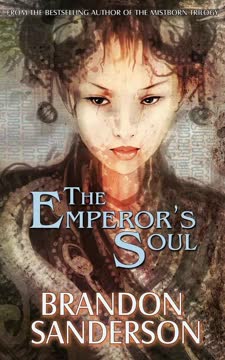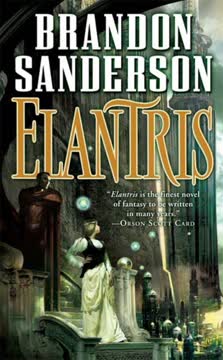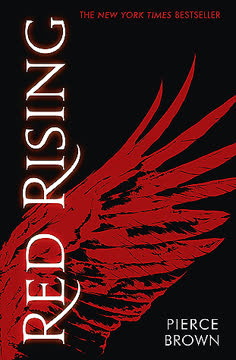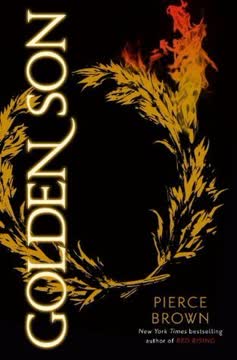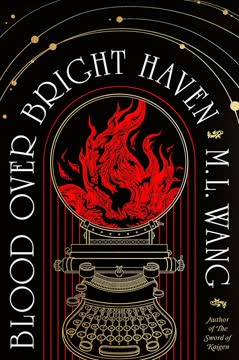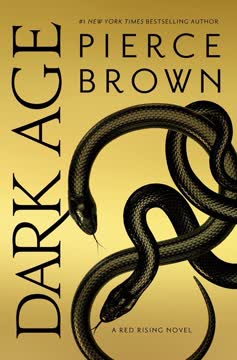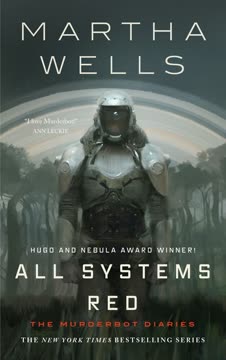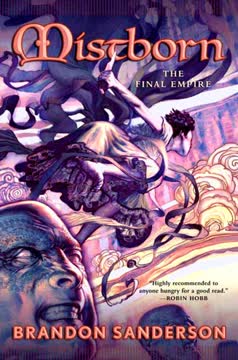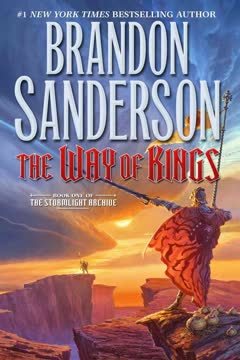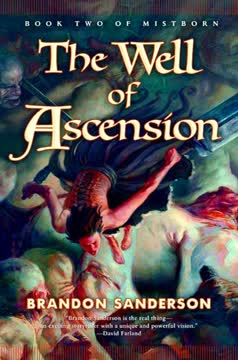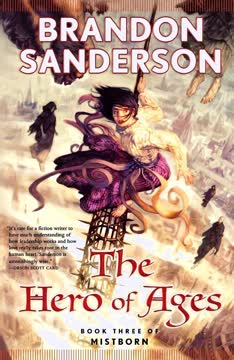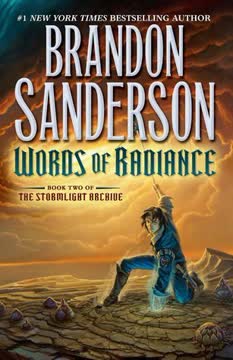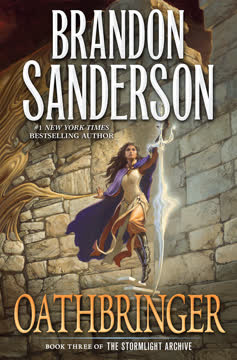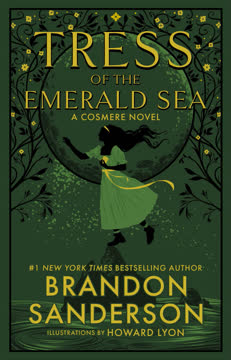Plot Summary
The Forger's Dilemma
Wan ShaiLu, known as Shai, is a renowned Forger—an artist who can magically rewrite the history of objects and, illegally, souls. Caught after a failed heist, she faces death, but the empire's arbiters see a use for her forbidden skills. The emperor has been left brain-dead after an assassination attempt, and only a perfect Forgery of his soul can save the regime. Shai is offered a bargain: her life in exchange for the impossible task of recreating the emperor's soul in just 100 days. Shai must decide whether to accept, knowing she is both a prisoner and the empire's last hope.
Prison Walls and Promises
Shai is locked in a cell designed to thwart Forgers, with walls of many stones and hidden unForgeable metal. She studies her prison, searching for weaknesses, and begins carving a makeshift soulstamp, all while counting the days to her execution. When summoned by the arbiters, she realizes they want her skills, not her death—at least, not yet. She negotiates for her precious Essence Marks, the soulstamps that define her own alternate selves, and begins to see a path to survival, even as she remains under constant threat.
The Emperor's Empty Shell
Shai is brought to the emperor's bedside. Ashravan, once powerful, now stares blankly, his mind gone despite his body being healed by magical surgeons. The arbiters reveal the political stakes: if Ashravan dies, their faction loses everything. They need Shai to Forge a new soul for him, one so perfect that no one will suspect the truth. The task is unprecedented, dangerous, and morally fraught. Shai accepts, knowing the challenge is as much about artistry as survival.
Bargain of Desperation
Shai negotiates the terms of her work: access to soulstone, research materials, and her own belongings. She is watched by guards, the suspicious Captain Zu, and a terrifying Bloodsealer whose magic binds her to her room with a mark of her own blood. The arbiters, especially the cunning Frava and the thoughtful Gaotona, debate how to control Shai. Shai, meanwhile, begins to plan not just the Forgery, but her eventual escape, knowing her life is forfeit once her work is done.
Artistry and Abomination
As Shai studies the emperor's life, she debates with Gaotona about the morality and artistry of Forgery. She demonstrates her skill by transforming mundane objects into masterpieces, arguing that Forgery is true art—improving upon reality, not just copying it. Gaotona, skeptical but curious, becomes both her jailer and her confidant. Their philosophical exchanges reveal the blurred lines between imitation and creation, truth and deception, and the value of authenticity.
The Study of Souls
Shai immerses herself in the emperor's histories, journals, and personal accounts, seeking to understand not just his actions but his motivations, fears, and desires. She realizes that to Forge a soul, she must know Ashravan better than he knew himself. The process is painstaking, requiring empathy, intuition, and relentless attention to detail. Shai's work becomes a true act of creation, as she pieces together the puzzle of a man's identity.
Gaotona's Test
To refine her Forgery, Shai tests soulstamps on Gaotona, whose background is similar to the emperor's. Each stamp alters a fragment of his personality or memories, lasting only moments before fading. Through these experiments, Shai learns what makes a soul plausible, and Gaotona gains unsettling insight into the malleability of self. Their relationship deepens, built on mutual respect and reluctant trust, even as Gaotona remains haunted by the ethical cost.
Frava's Schemes
Arbiter Frava, ever ambitious, tries to manipulate Shai into building secret controls into the emperor's new soul. She offers Shai power and wealth, but Shai sees through the ploy—Frava has another Forger waiting to finish or alter the work if Shai falters. The political machinations around Shai grow more dangerous, and she realizes her time is running out. Every step forward in her project brings her closer to betrayal.
The Puzzle of Ashravan
As Shai delves deeper, she uncovers the complexities of Ashravan's character: his youthful idealism, gradual corruption, and the subtle influences that shaped his reign. She must balance accuracy with artistry, ensuring the Forgery is both convincing and, perhaps, an improvement. The process becomes personal—Shai is no longer just saving herself, but is invested in giving Ashravan a second chance at greatness.
The Forgery's Price
Shai's work takes a toll—physically, emotionally, and spiritually. She is tempted by the idea of using her own Essence Marks to escape, or even to erase her identity and live a simple life. Her conversations with Gaotona force her to confront the meaning of art, the burden of deception, and the possibility of redemption. The price of the Forgery is not just her freedom, but her very sense of self.
Escape Plans and Traps
As the deadline nears, Shai sets elaborate traps and backup plans, manipulating guards and exploiting palace politics. She engineers a confrontation with the Bloodsealer and prepares for the inevitable betrayal by the arbiters. Her escape hinges on timing, cunning, and the hope that her masterpiece will be finished in time. The tension mounts as enemies close in and trust becomes a rare commodity.
The Final Soulstamp
Exhausted and driven, Shai completes the emperor's Essence Mark—a soulstamp that encapsulates his entire being. The act is both a technical marvel and an act of faith. She risks everything to test it herself, breaking into the emperor's chambers to apply the stamp. The moment is fraught with uncertainty: will the Forgery take, or will everything unravel?
Betrayal and Blood
Captain Zu, driven by vengeance, attacks Shai, triggering the collapse of her carefully laid trap. Injured but resourceful, Shai uses her Essence Marks to transform herself into a warrior, battling the Bloodsealer's undead minions in a desperate bid for freedom. The palace erupts in chaos as Shai races against time, blood, and magic to escape with her life and her art intact.
The Emperor Reborn
The Forgery succeeds: Ashravan awakens, his mind and personality restored—perhaps even improved. The arbiters marvel at the perfection of the work, but remain wary of hidden manipulations. Ashravan, unaware of the full truth, resumes his rule, while Gaotona alone understands the magnitude of what has been done. The empire is saved, but at what cost?
The Chase and the Choice
Shai flees the palace, pursued by the Bloodsealer's creatures and the empire's agents. She uses her Essence Marks to change her appearance and abilities, outwitting her pursuers and escaping into the wild. The choice to run, rather than hide or fight, is both pragmatic and symbolic—a rejection of the roles others would force upon her.
The Masterpiece Unveiled
Gaotona receives Shai's secret notes, revealing the subtle changes she made to Ashravan's soul. Rather than inserting control for the arbiters, she has nudged the emperor toward wisdom and reform. The Forgery is not just a copy, but a masterpiece—art that shapes the future. Gaotona, moved to tears, recognizes the work as true genius, even as he must destroy the evidence to protect the empire.
The Truth in Ashes
Gaotona burns Shai's notes, ensuring that no one can ever uncover the truth behind the emperor's resurrection. The act is both a sacrifice and a tribute to Shai's artistry. The empire continues, unaware that its fate now rests on the soul of a man who is both himself and something new—a living Forgery.
The Forger's Legacy
Shai, now free, reflects on her journey. She has left her mark on history, not through theft or deception, but through creation. Her masterpiece sits on the throne, and her own soul remains her greatest work. The story ends with Shai riding into the unknown, her future unwritten, her legacy secure in the soul of an emperor.
Characters
Wan ShaiLu (Shai)
Shai is a MaiPon Forger whose magical artistry allows her to rewrite the history of objects—and, illegally, souls. Cunning, fiercely intelligent, and driven by both pride and a longing for recognition, she is caught between her own survival and the demands of her captors. Shai's psychological complexity is central: she is both a con artist and a true artist, torn between the thrill of deception and the desire to create something lasting. Her relationship with Gaotona evolves from adversarial to deeply respectful, and her journey is as much about self-discovery as escape. Shai's development is marked by her willingness to risk everything for her art, and her ultimate act of genuine creation in Forging the emperor's soul.
Gaotona
Gaotona is the eldest and most principled of the empire's ruling arbiters. Initially skeptical and even hostile toward Shai's art, he becomes her primary observer, tester, and, eventually, confidant. Gaotona's psychological struggle is profound: he despises deception but is forced to rely on it to save the empire. His interactions with Shai are marked by curiosity, disappointment, and ultimately admiration. Gaotona's willingness to subject himself to Shai's tests and his final act of destroying her notes reveal a man torn between duty, conscience, and awe for true artistry.
Frava
Frava is the senior arbiter and the true power behind the throne during the emperor's incapacitation. Calculating and ruthless, she sees Shai as a tool to be used and discarded. Frava's attempts to control the outcome—by commissioning secret back doors in the Forgery and keeping a backup Forger—highlight her paranoia and hunger for power. Her relationship with Shai is adversarial, marked by mutual manipulation and distrust. Frava embodies the dangers of unchecked ambition and the moral compromises of political survival.
Emperor Ashravan
Ashravan is the emperor whose mind is destroyed by an assassination attempt, leaving his body alive but empty. Though absent for most of the narrative, his personality, history, and potential are reconstructed through Shai's research and artistry. The Forged Ashravan becomes both a symbol of the empire's resilience and a testament to the power of art to shape reality. His rebirth is both a triumph and a lingering ethical question: is he truly himself, or something new?
Captain Zu
Zu is the captain of the Striker guards, personally invested in Shai's downfall after her crimes humiliate him. He is relentless, suspicious, and ultimately violent, serving as a constant reminder of the dangers Shai faces. Zu's pursuit culminates in a direct attack, triggering Shai's escape and transformation. He represents the personal vendettas and institutional brutality lurking beneath the empire's order.
The Bloodsealer
The Bloodsealer is a practitioner of a dark art, using Shai's blood to bind her to her room and hunt her if she escapes. His undead minions and chilling presence add a supernatural threat to Shai's predicament. Psychologically, he is both a tool of the arbiters and a figure of personal obsession, ultimately outwitted and defeated by Shai's cunning.
The Imperial Fool
The Fool is a minor but pivotal character who betrays Shai during her initial heist, leading to her capture. His actions set the entire plot in motion and serve as a reminder of the dangers of misplaced trust in a world of deception.
The Other Arbiters
The remaining arbiters are less individually defined but collectively represent the self-serving bureaucracy of the empire. They are motivated by fear of losing power and are willing to sanction abomination to preserve their status. Their interactions with Shai and each other reveal the fragility and moral bankruptcy of imperial politics.
Palace Guards (Hurli, Yil, etc.)
The guards who watch over Shai are drawn into her schemes, manipulated through empathy and subterfuge. Their personal details—family, ambitions, fears—are tools for Shai, but also humanize the machinery of the empire.
ShuXen
ShuXen, the original painter whose masterpiece Shai destroys, is a symbol of the tension between art, ownership, and legacy. His request for Shai to burn his painting adds a layer of moral ambiguity to her actions and deepens the theme of art's impermanence.
Plot Devices
Forgery and Soulstamps
The central device is Forgery: the magical rewriting of an object's or person's history through intricately carved soulstamps. This system requires deep knowledge, plausibility, and artistry, blurring the line between imitation and creation. The process of Forging a soul becomes a meditation on what makes a person unique, and whether identity can be authentically replicated or improved. The narrative structure mirrors this, as Shai's work on the emperor's soul is both a literal and figurative act of reconstruction.
The Ticking Clock
Shai is given 100 days to complete her impossible task, creating constant pressure and urgency. The countdown structures the narrative, with each chapter marking progress and setbacks. The looming threat of execution, betrayal, or failure drives both plot and character development.
Political Intrigue and Betrayal
The arbiters' machinations, Frava's secret plans, and the ever-present risk of betrayal create a web of intrigue. Shai must navigate not just magical challenges, but the shifting loyalties and hidden agendas of those around her. Foreshadowing is used throughout, as Shai anticipates and counters the moves of her enemies.
Psychological Manipulation
Shai's greatest tool is not magic, but her ability to read, understand, and influence people. Her relationship with Gaotona, in particular, is built on a paradox: she manipulates him by being honest, creating a bond that is both real and strategic. The narrative explores the limits of deception and the power of authenticity.
Escape and Transformation
Shai's escape is engineered through a combination of magical transformation (using Essence Marks to become different versions of herself) and traditional cunning. The climax blends action with existential questions: can one truly become someone else, and at what cost?
Analysis
Brandon Sanderson's The Emperor's Soul is a meditation on the nature of art, identity, and authenticity, wrapped in a taut fantasy thriller. Through the character of Shai, the novella explores whether imitation can become creation, and whether a forgery—if done with enough skill, empathy, and understanding—can be as real, or even more real, than the original. The magic system of Forgery is both a literal plot device and a metaphor for the ways we reconstruct ourselves and others, shaped by memory, perception, and intent. The story interrogates the ethics of power, the cost of survival, and the possibility of redemption through creation rather than destruction. In a world obsessed with heritage and appearances, Shai's ultimate act is not just to save herself, but to leave behind a masterpiece that nudges a broken empire toward renewal. The novella's lesson is that true art, and true change, require both boldness and subtlety—and that sometimes, the greatest acts of creation are those that remain unseen.
Last updated:
FAQ
```markdown
Synopsis & Basic Details
What is The Emperor's Soul about?
- Master Forger's Impossible Task: The novella centers on Wan ShaiLu (Shai), a renowned Forger with the magical ability to rewrite the history and essence of objects and souls. Captured after a daring heist, Shai faces execution but is offered a desperate bargain by the Rose Empire's arbiters: recreate the soul of their brain-dead Emperor Ashravan within 100 days, or die.
- Artistry, Identity, and Deception: Shai, a prisoner under constant surveillance, must delve into the emperor's life, piecing together his true self from fragmented records and personal accounts. This monumental task forces her to confront the philosophical implications of her art, blurring the lines between imitation and genuine creation, and questioning the very nature of identity.
- High-Stakes Political Intrigue: Beyond the artistic challenge, Shai navigates a treacherous political landscape where the arbiters, particularly the cunning Frava and the principled Gaotona, vie for control. Her survival depends not only on her magical skill but also on her ability to manipulate her captors and orchestrate a daring escape, all while crafting a masterpiece that could save or doom an empire.
Why should I read The Emperor's Soul?
- Deep Philosophical Exploration: Readers seeking a story that delves into profound questions about identity, authenticity, and the nature of art will find The Emperor's Soul deeply rewarding. It challenges perceptions of truth and lies, making it a compelling read for those who enjoy intellectual depth in their fantasy.
- Masterful Magic System: Brandon Sanderson's signature hard magic system, Forgery, is brilliantly showcased, offering a unique and intricate form of magic that is both logical and creatively applied. The detailed process of soulstamping, requiring immense research and artistic skill, provides a fresh take on magical abilities.
- Tense, Character-Driven Narrative: The novella delivers a gripping, high-stakes plot driven by Shai's cunning and resilience. Her evolving relationship with Arbiter Gaotona, the constant threat of betrayal, and the ticking clock create a compelling narrative that keeps readers on the edge of their seats, making it a must-read for fans of character-focused thrillers.
What is the background of The Emperor's Soul?
- Rich Imperial Culture: The story is set in the Rose Empire, a society deeply rooted in its "Heritage Faction" which reveres ancient cultures and traditions, often through the use of Forgery to replicate historical artifacts. This cultural backdrop, with its emphasis on appearance and legacy, provides a fertile ground for the novella's themes of authenticity and imitation.
- Political Factionalism: The empire is governed by a council of arbiters representing various factions, creating a volatile political environment. The assassination attempt on Emperor Ashravan is a direct result of these power struggles, particularly with the "Glory Faction," highlighting the constant threat of internal conflict and the arbiters' desperate need to maintain stability.
- Inspired by Asian Art & History: As detailed in Sanderson's postscript, the concept of soulstamps was inspired by his visit to the National Palace Museum in Taiwan, observing traditional Chinese "chops" or yìnjiàn. This cultural influence is evident in the intricate artistry of Forgery and the philosophical underpinnings of the magic, connecting the fantasy world to real-world historical practices.
What are the most memorable quotes in The Emperor's Soul?
- "All things exist in three Realms, Gaotona. Physical, Cognitive, Spiritual.": This quote, spoken by Shai on Day Twelve, is pivotal to understanding the magic system of Forgery and the novella's core themes. It succinctly explains the metaphysical framework that allows Forgery to work, emphasizing that objects and people possess an inherent "soul" or essence that can be rewritten, providing a deep insight into the mechanics of identity and change.
- "True art was more than beauty; it was more than technique. It was not just imitation. It was boldness, it was contrast, it was subtlety.": Gaotona's realization in the Epilogue encapsulates the novella's central argument about the nature of art. This quote defines the profound impact of Shai's work, elevating Forgery from mere deception to a legitimate, even transcendent, art form that rivals traditional masterpieces, offering a powerful statement on artistic merit.
- "You can't manipulate people by being genuine." "You can't?" Shai asked. "Is that not how you've made your entire career?": This exchange between Shai and Gaotona on Day Ninety-Eight highlights the complex psychological manipulation at play and the paradox of honesty as a tool. It reveals Shai's deep understanding of human nature and Gaotona's own unwitting influence, underscoring the novella's exploration of how trust and authenticity can be strategically employed, even in a world of lies.
What writing style, narrative choices, and literary techniques does Brandon Sanderson use?
- Precise and Accessible Prose: Sanderson employs a clear, direct writing style that makes complex magical concepts and philosophical debates easily digestible. His prose is functional yet capable of evocative descriptions, particularly when detailing the intricate process of Forgery or the emotional states of characters, ensuring the narrative remains engaging and focused.
- Structured Time-Jump Narrative: The story is structured with distinct "Day" markers (e.g., "Day Two," "Day Twelve"), creating a clear sense of a ticking clock and emphasizing the urgency of Shai's task. This narrative choice effectively builds tension and allows readers to track Shai's progress and the escalating stakes, mirroring the methodical nature of her Forgery.
- Internal Monologue and Philosophical Dialogue: A significant portion of the narrative unfolds through Shai's internal thoughts and her philosophical discussions with Gaotona. This technique provides deep insight into her motivations, the mechanics of Forgery, and the novella's thematic concerns, allowing for a rich exploration of identity, art, and morality from multiple perspectives.
Hidden Details & Subtle Connections
What are some minor details that add significant meaning?
- The "Ancient" Urns' Hidden Seals: Early in the story, Shai observes "ancient" urns in the palace, suspecting they have soulstamps on their bottoms. This seemingly minor detail (Day Two) foreshadows the widespread, accepted use of object Forgery within the Heritage Faction, subtly revealing the hypocrisy of the arbiters who condemn Shai's "abomination" while benefiting from similar magic, highlighting the theme of societal double standards regarding art and authenticity.
- Bloodsealer's Letters and Drunkenness: Shai notices the Bloodsealer is punctual when he receives letters from home but drinks heavily and is late otherwise (Day Seventy-Six). This detail, initially a simple observation, becomes crucial for Shai's escape plan, as she forges a letter to manipulate the guards into attacking him. It reveals the Bloodsealer's hidden vulnerability and humanity, contrasting with his monstrous image, and underscores Shai's mastery of psychological manipulation.
- Gaotona's "Disappointed Grandfather" Demeanor: Shai frequently notes Gaotona's expression as that of a "disappointed grandfather" (Day Thirty), particularly when discussing her "wasted" talent. This recurring observation subtly hints at Gaotona's deep-seated desire for Ashravan to live up to his potential, mirroring his own unfulfilled hopes for the emperor. It establishes a personal, almost familial, connection that Shai later exploits by being "genuine," revealing the emotional core beneath his stern exterior.
What are some subtle foreshadowing and callbacks?
- Shai's Cell Wall's "Forty-Four Kinds": Shai's immediate correction of Frava, stating her prison cell had "forty-four kinds" of stone, not thirty (Day Two), subtly foreshadows her meticulous attention to detail and deep understanding of Forgery. This callback to her initial observation on Day Two establishes her expertise and cunning, setting the stage for her later, more complex Forgeries and her ability to outwit her captors.
- The Moon Scepter's "Simple Forgery": Frava dismisses Shai's attempt to steal the Moon Scepter as a "simple forgery" (Day Two), unaware that Shai had successfully swapped the original for her copy. This early detail is a callback to Shai's initial crime and subtly foreshadows her ultimate triumph: placing an even grander "forgery" (Ashravan's soul) on the throne, demonstrating her unparalleled skill and the arbiters' underestimation of her.
- Ashravan's Journal and Self-Reflection: Shai notes that Ashravan's journal is "worn and stained from constant turning" (Day Seventeen), indicating he reread it frequently. This detail foreshadows Shai's final, subtle manipulation of his soul, embedding "triggers that will cause him to react in a specific way to the assassination and his recovery," leading him to seek his journal and reflect on his youthful self (Epilogue). It highlights the cyclical nature of self-improvement and the power of introspection.
What are some unexpected character connections?
- ShuXen and Shai's Shared Artistic Ethos: The revelation that ShuXen, the blind master painter, hired Shai to destroy his masterpiece (Day Seventy-Six) creates an unexpected connection between them. This bond, rooted in a shared disdain for the empire's appropriation of art and a desire for artistic integrity, reveals a deeper, more principled side to Shai's actions than mere theft. It connects her to a legacy of artistic rebellion, challenging the perception of her as a simple criminal.
- Gaotona's Unwitting Mentorship of Ashravan: Shai deduces that Gaotona "encouraged Ashravan to seek the throne" and later "annoyed him with constant nagging about what he should accomplish" (Day Seventeen, Day Thirty). This reveals Gaotona's long-standing, almost paternal, influence on Ashravan, establishing a deep, complex connection that transcends their political roles. It explains Gaotona's personal investment in the emperor's restoration and his unique ability to test Shai's soulstamps, highlighting a hidden emotional depth in their relationship.
- The Bloodsealer's Familial Motivations: Shai's discovery that the Bloodsealer is a young man writing letters to a woman "back in Dzhamar" (Day Seventy-Six) reveals an unexpected personal motivation behind his sinister actions. This humanizes the seemingly monstrous character, showing he is driven by love and a desire to provide for his family, creating a subtle parallel to Shai's own complex motivations and challenging the reader's initial judgment of him.
Who are the most significant supporting characters?
- Arbiter Gaotona: The Moral Compass: Gaotona serves as the story's moral anchor and Shai's primary intellectual foil. His deep-seated belief in truth and his reluctant reliance on Shai's "abomination" create a profound internal conflict, making him the most complex supporting character. His willingness to undergo Shai's tests and his ultimate act of destroying her notes underscore his integrity and his role in validating Shai's art, making him crucial to the novella's thematic exploration of ethics and art.
- Captain Zu: The Personal Antagonist: Captain Zu represents the personal vendetta and institutional brutality that Shai faces. His humiliation at her hands fuels his relentless pursuit and desire for revenge, culminating in his direct attack on Shai. Zu's role is significant as he acts as a catalyst for Shai's escape, forcing her to activate her warrior Essence Mark and demonstrating the physical dangers she must overcome, highlighting the theme of survival against overwhelming odds.
- ShuXen: The Artistic Predecessor: Though only appearing through Shai's recounting, ShuXen, the blind master painter, is a significant supporting character. His request for Shai to destroy his masterpiece provides a crucial ethical dilemma and reveals a shared artistic philosophy with Shai. He represents the tension between an artist's legacy and their personal intent, influencing Shai's understanding of art's purpose and adding a layer of moral complexity to her actions.
Psychological, Emotional, & Relational Analysis
What are some unspoken motivations of the characters?
- Shai's Quest for Artistic Validation: Beyond mere survival or wealth, Shai's deepest unspoken motivation is the desire for her Forgery to be recognized as true art, even if secretly. Her internal monologue on Day Forty-Two reveals, "She found that she wanted to make Ashravan live. She wanted to try, at least." This drive to create an enduring masterpiece, a "Forgery, sitting on the Rose Throne itself," transcends her immediate need for escape, revealing a profound artistic pride and a longing for her work to have significant, lasting impact.
- Gaotona's Paternal Regret for Ashravan: Gaotona's consistent disappointment in Ashravan's later reign, and his willingness to undergo Shai's tests, stems from a deep, unspoken paternal regret. Shai observes, "You just want Ashravan back. You refuse to accept that you've lost him. You loved him as a son—the youth that you mentored, the emperor you always believed in" (Day Seventy). This reveals his motivation isn't just political stability, but a personal desire to restore the idealistic leader he once knew, highlighting the emotional weight of his actions.
- Frava's Fear of Losing Control: Frava's relentless scheming and her attempts to insert "back doors" into Ashravan's soul are driven by an unspoken fear of losing her immense power and influence. Her paranoia, as Shai deduces, leads her to keep "another Forger standing by" (Day Seventeen), indicating a deep-seated insecurity about her position. This motivation underscores the corrupting nature of power and the lengths to which individuals will go to maintain it, even at the cost of ethical compromise.
What psychological complexities do the characters exhibit?
- Shai's Paradoxical Authenticity: Shai exhibits the psychological complexity of a master deceiver who values genuine connection. She manipulates Gaotona by "being genuine" (Day Ninety-Eight), revealing that her honesty is a calculated strategy, yet also a part of her true self. This paradox highlights her internal struggle between her identity as a Forger—a master of lies—and her longing for authentic creation and connection, making her a deeply nuanced character.
- Gaotona's Moral Compromise and Awe: Gaotona struggles with the psychological burden of sanctioning an "abomination" (Forgery) for the "greater good" of the empire. His initial revulsion, followed by reluctant acceptance and eventual awe for Shai's art, showcases a complex moral evolution. He admits, "Our hunger for power outweighs our conscience" (Day Seventy), yet his tears upon reading Shai's notes reveal a profound appreciation for true artistry, demonstrating his internal conflict between duty and aesthetic appreciation.
- Ashravan's Latent Idealism and Indulgence: Even in his brain-dead state, Ashravan's psychological complexity is revealed through Shai's research. He was "idealistic" but also "indulgent," having "drifted farther and farther away" from his initial goals (Day Fifty-Nine). Shai's Forgery aims to restore his "him that could have been," suggesting a latent potential for greatness buried beneath years of complacency. This highlights the psychological impact of environment and the possibility of a "second chance" at self-actualization.
What are the major emotional turning points?
- Gaotona's Acceptance of Shai's "Art": A significant emotional turning point occurs when Gaotona, after initially dismissing Forgery as "lacking in spirit," witnesses Shai's transformation of her drab room into a beautiful chamber (Day Fifty-Eight). His stunned reaction and later admission that he "began to think" differently (Day Thirty) mark a shift from condemnation to reluctant appreciation, paving the way for his deeper understanding and eventual awe of her work.
- Shai's Investment in Ashravan's Soul: Shai experiences a profound emotional turning point when she realizes she genuinely wants to "make Ashravan live" (Day Forty-Two), rather than just escape. This shift from purely self-serving motivation to artistic dedication is crucial, as she finds herself "thrilled by the challenge" and "physically painful" at the thought of her work being a sham. This moment elevates her from a mere con artist to a true artist, deeply invested in her creation.
- Gaotona's Decision to Return the Essence Marks: The most impactful emotional turning point for Gaotona is his decision to return Shai's Essence Marks, despite knowing it will facilitate her escape (Day Ninety-Eight). His admission, "I've been played for a fool," is immediately followed by, "But I don't want you killed either, girl." This reveals his deep, almost paternal, affection and respect for Shai, overriding his duty and demonstrating a profound emotional connection that transcends their adversarial roles.
How do relationship dynamics evolve?
- Shai and Gaotona: From Adversaries to Mutual Respect: The relationship between Shai and Gaotona undergoes the most significant evolution. Initially, Gaotona views Shai as an "abomination" and a "master trickster," while Shai sees him as a "displeased grandfather." Through their philosophical debates and Gaotona's participation in the soulstamp tests, they develop a grudging respect, then a deeper understanding. By the end, Gaotona trusts Shai enough to return her Essence Marks, and Shai kisses him, acknowledging him as a "kindly grandfather," transforming their dynamic into one of profound, albeit complicated, mutual admiration and affection.
- Shai and Frava: From Manipulation to Open Hostility: The dynamic between Shai and Frava is consistently adversarial, evolving from subtle manipulation to overt hostility. Frava initially attempts to control Shai through false promises and threats, while Shai counters with her own deceptions. Frava's attempts to steal Shai's notes and her plan to have Shai killed (Day Fifty-Eight) reveal her ruthless nature. This culminates in Zu's assassination attempt, orchestrated by Frava, solidifying their relationship as one of pure antagonism and highlighting the cutthroat nature of imperial politics.
- Shai and the Palace Guards: From Captor-Captive to Manipulated Allies: Shai's relationship with the ordinary palace guards evolves from a standard captor-captive dynamic to one where she subtly manipulates them into becoming unwitting allies. By befriending them, learning their personal details, and exploiting their disdain for the Bloodsealer (Day Forty-Two, Day Seventy-Six), she turns them into instruments of her escape. This demonstrates her exceptional understanding of human nature and her ability to leverage empathy and shared grievances to her advantage, transforming passive observers into active, if unwitting, participants in her schemes.
Interpretation & Debate
Which parts
Review Summary
The Emperor's Soul is a highly praised novella by Brandon Sanderson, set in the Cosmere universe. Readers appreciate its intricate magic system, compelling characters, and thought-provoking themes on art and identity. Many consider it a masterpiece, praising Sanderson's ability to create a rich world and complex story in just over 100 pages. The novella won the Hugo Award for Best Novella in 2013. Fans particularly enjoy the protagonist Shai and her interactions with other characters, as well as the philosophical questions raised throughout the story.
Elantris Series
Similar Books
Download PDF
Download EPUB
.epub digital book format is ideal for reading ebooks on phones, tablets, and e-readers.
